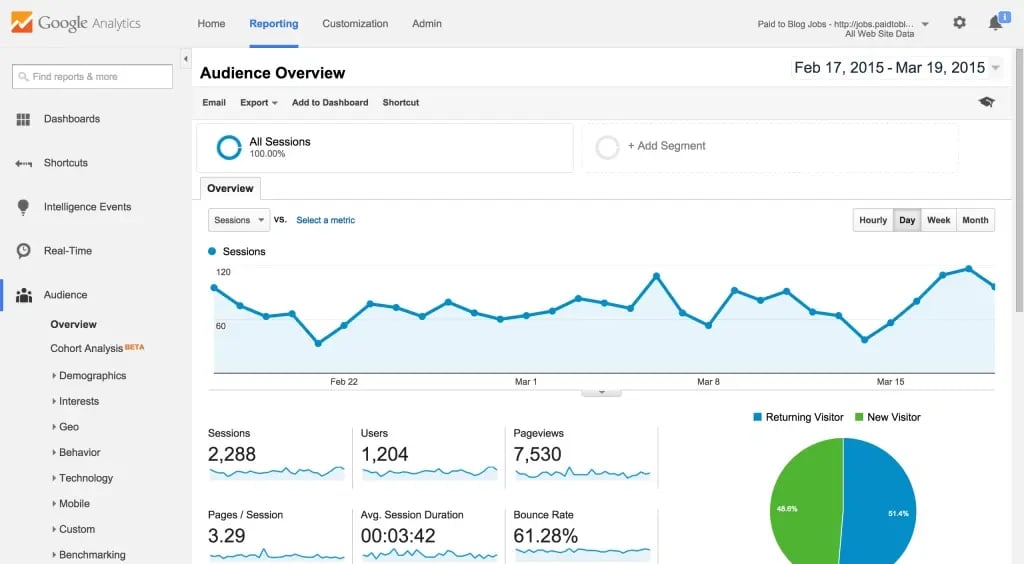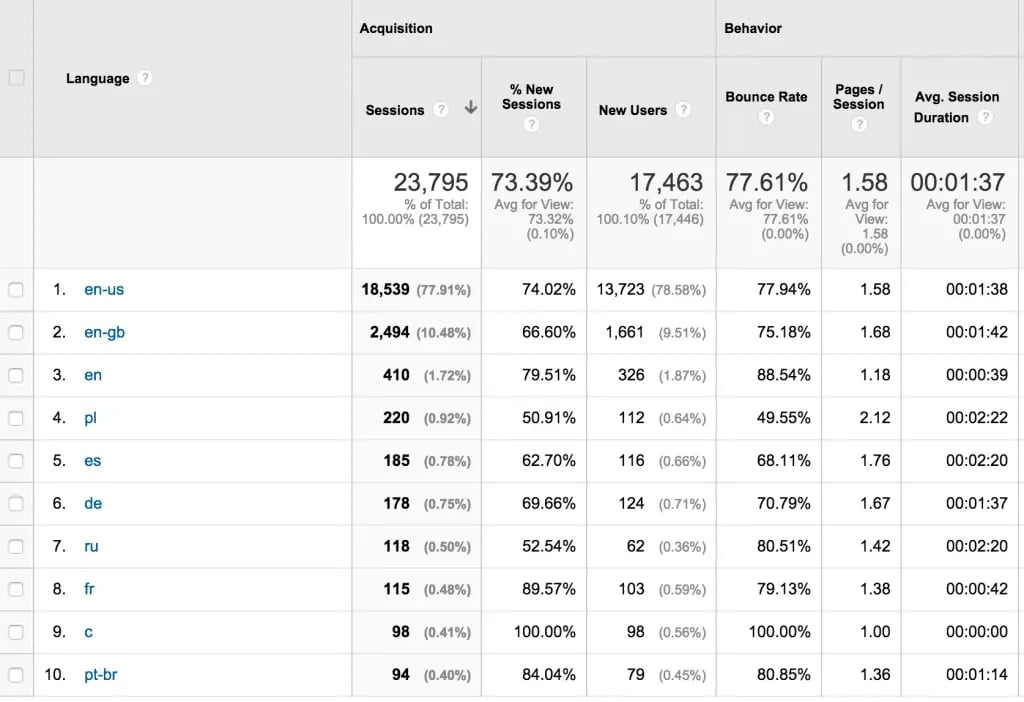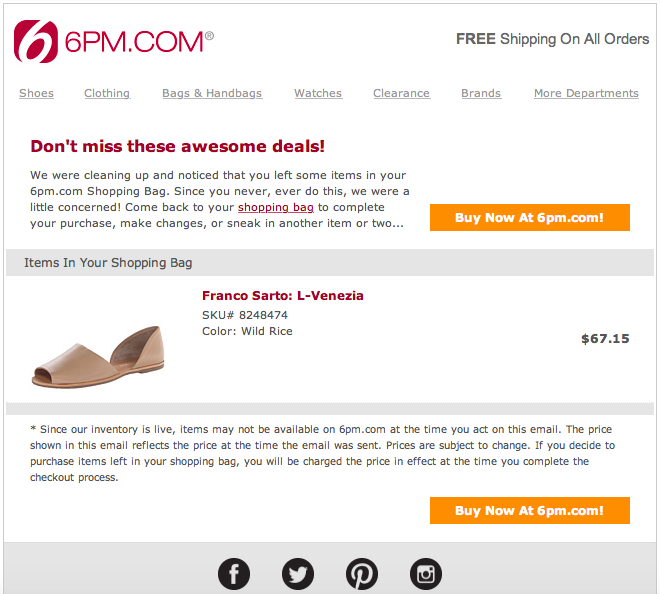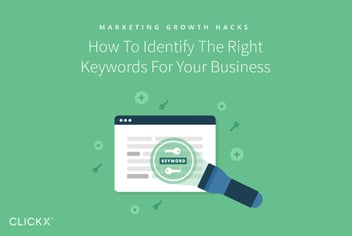The Right Way to Market Your Business Online (Hint: You’re Not Doing It)
In my last post I discussed how quickly Search Engine Optimization (SEO) changes, resulting in previously successful practices becoming redundant. While the same can also be said for online marketing as a whole, there is one element that has remained integral over the years, yet has largely been ignored.
For too long marketers have been casting their net too wide, generating as much exposure for their business as possible, regardless of who it is with. They have failed to focus on what is really important to their business: the customer.
[Tweet “Marketers often fail to focus on what is most important: the customer. “]
By understanding their customers, marketers are not only able to provide a great customer experience, they are also able to nurture long term relationships and generate targeted, cost effective and successful online marketing.
In this post I will outline the essential steps that you can emulate to ensure you are focusing on the customer in all of your online marketing efforts.
Understand Who Your Audience Is
Before you can begin to improve your overall customer experience, you need to delve into who your customers actually are.
Marketers have a bad habit of promoting their business with ‘one size fits all’ campaigns that are aimed at their entire audience base. While this approach may work in the short term, it certainly isn’t maintainable in the long term.
So ask yourself: do you know who your customers are? Do you know how old they are? How much disposable income they have? How engaged they are with your brand?
The list of potential questions is endless, so a sensible place to start is to determine what customer information is important to your business and then go out and collect it.
More often than not this information will fall into the following three categories.
1. Demographic Data
Demographic data refers to information on age, gender, location and vocation. It is simple to collect and can be done via a wide variety of online marketing, such as web sign up forms, competitions, questionnaires and social media, and offline channels such as in-store or events.
2. Behavioral Data

Google Analytics offers up a veritable treasure trove of behavioral data.
Behavioral data offers more insightful information based around customers’ website and browsing behavior, such as the pages they visit most frequently, the items they search for most often and the pages they immediately bounce from. You can easily find this information via analytics platforms such as Google Analytics or via your CRM.
3. Transactional Data
Transactional data provides important information regarding your customers’ purchasing behavior; for example, the types of items they purchase, how frequently they purchase and how much they usually spend. This information can be found via multiple sources, such as your e-commerce platform, invoicing systems and any booking and reservation tools you may use.
Laser Target Your Audience
Now that you are getting to know your audience a little better, you can begin to improve their experience with your business. A great place to start is by increasing the targeting of your online marketing with the goal of providing your audience with exactly what they want, when they want it.
Using the data you have just collected you will be able to perform some really clever targeting at a wide range of levels, such as the below.
1. Target by Demographic

Google Analytics offers an enormous range of demographic data.
Demographic data, such as age and gender, is a useful starting point and will help you to determine the type of brand messaging, design and product that you should use in your online marketing efforts.
Location data, on the other hand, is useful for communicating locally with deals at location-specific stores, store openings and promotion of local events.
2. Target by Behavior
Behavioral data will provide a little more insight than demographic data and offers a strong indication of how engaged your audience are with your business. You can use these engagement metrics to determine where a recipient is in their buying lifecycle, as well as the type of products and services that they are interested in.
This information will help to determine the specific type of communications that are most appropriate for your audience segments.
3. Target by Transactional Data
Transactional data is essential for any e-commerce business as it allows for the creation of highly-targeted, product-relevant marketing that is based around the recipients’ previous purchase history.
For example, you can utilize recency and frequency purchase data to determine the most appropriate time to send your communications and the type of products that are likely to catch your audiences’ attention when advertised.
Market in Real-Time

Impromptu photo or marketing genius?
When thinking of real time marketing you may be reminded of the infamous Oreo Super Bowl tweet, or Ellen DeGeneres’ Oscars selfie. If relevant, these types of marketing stunts can be perfect for engaging your audience and getting your brand into the public eye.
However, real-time marketing shouldn’t be exclusively reserved for novelty campaigns. It should also be regularly used to interact with your audience when they are actively looking to engage with you.
If you’re feeling creative there are endless ways that you can practice real time marketing. But if you’re looking for a little inspiration, here are some of the most successful.
1. Email Automation
Email automation refers to communications that are automatically triggered when a recipient performs a specific behavior or action.
For example, when a recipient engages with you for the first time they could trigger a welcome campaign which introduces them to your business. Alternatively, if a site visitor has left an item in their online shopping basket, this may trigger an abandoned basket email complete with an incentive for them to complete their purchase.

Shopping Cart Abandonment Email at Work
2. Social Media
The instantaneous nature of social media makes it perfect for real time marketing. By monitoring online mentions of your business, you have the opportunity to immediately engage and respond to the exact people who are talking about you online.
Social Media also offers a platform to provide real time updates and information to your customers regarding your business and any relevant news or events you are attending.
3. Customer Service
Potentially the most important channel for real-time marketing is your own customer service.
By monitoring online questions and queries relating to your business and immediately responding to them via social media, forums, blogs and of course email and telephone, you can offer customers exceptional customer service, which will ensure they remain happy in the long term.
Create a Seamless Mobile Experience
Did you know that 80% of internet users own a smartphone?
Imagine how frustrating it is for these users to engage with targeted marketing, click on a Call to Action (CTA) and then be faced with a disappointing mobile experience. This is a frequent occurrence and may explain why mobile users have a 9.56% higher bounce rate than desktop users.
To offer a seamless mobile experience, ensure that the journey your audience takes after clicking a CTA is as mobile-friendly as possible. Make sure that landing pages are directly related to your CTA, render on all popular devices and are designed from their inception with mobile in mind.
You can use Google’s mobile-friendly testing tool to check your pages.
Forms and transactional pages should also be a breeze; especially if users are having to enter sensitive information. Ensure that these pages are easy to use on all mobile devices, contain succinct information and are 100% secure.
Conclusion
To successfully market your business online you need to stop guessing and instead start understanding your audience.
This approach will enable you to create more targeted and relevant campaigns which not only generate higher ROI in the short term, but will also help you to build a long term customer base which will generate long term revenue.
So stop making the same mistakes that other businesses are making. Move ahead of the curve and get your customers to love you before they love your competitors.
How much information do you hold on your customers and are you using it effectively? Let us know in the comments!



